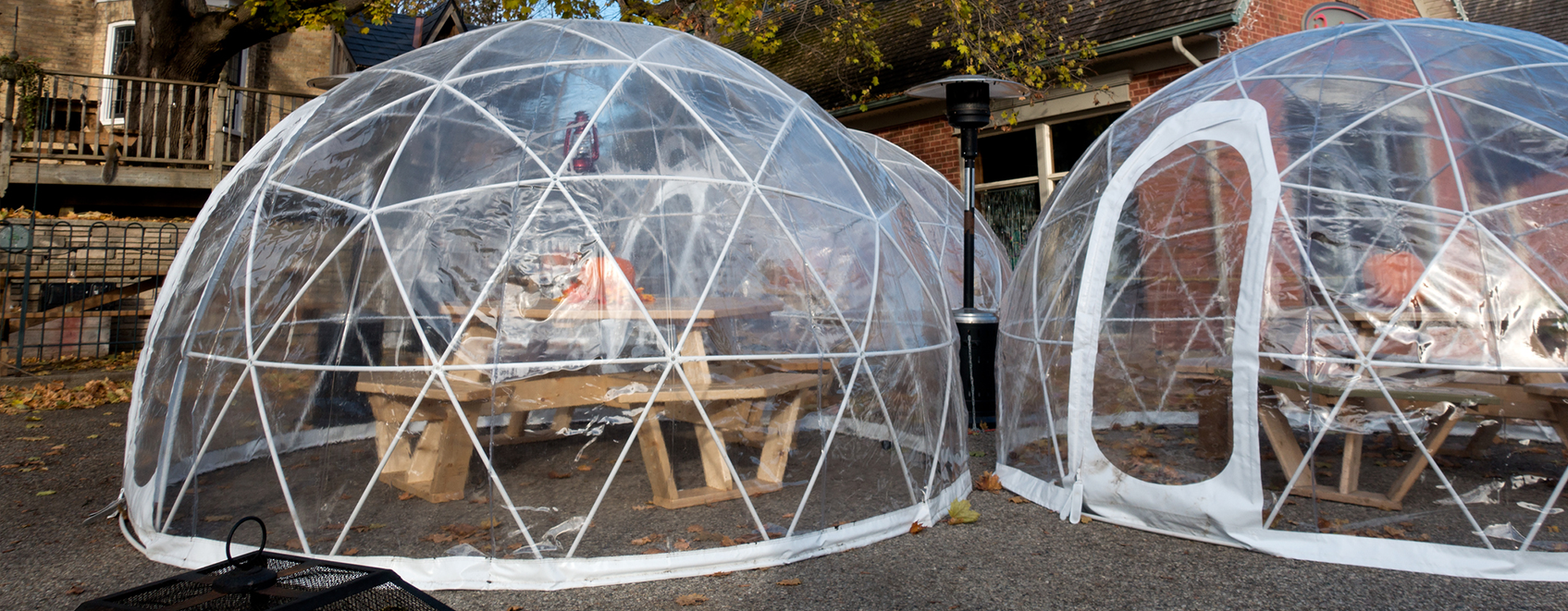Two things restaurant owners will want to know about insuring temporary dining structures
January 18, 2021
UFG Insurance
Business
Read Time: 3 min

Thinking about adding an interim structure for outdoor dining during the COVID-19 pandemic? Tents, igloo bubbles and other properly ventilated enclosures have been helping restaurants adapt to running a business during the pandemic. But what about insuring these hopefully short-lived items?
When it comes to insurance coverage for temporary dining structures, here are two things restaurant owners should keep in mind.
1. Remember to address safety in all its forms.
While you’re focused on protecting public health, you’ll also need to examine other potential safety threats when it comes to amending coverage due to COVID-19. In insurance language, we call the process of identifying safety hazards “risk control.” Strengthening the weak safety spots within any business can help it continue to run smoothly, which is especially true for restaurants during COVID.When it comes to temporary outdoor dining structures, think about slip-and-fall hazards. Your employees probably aren’t used to working outside too much and customers aren’t necessarily used to dining in an outside bubble or tent at a restaurant. It’s all unfamiliar, and that new environment can come with risks. Slick concrete and extension cords can cause a tumble. Cigarette smoking and heat lamps can cause fires.
Ask yourself what you can do differently to decrease the odds of someone falling or accidently causing a damaging fire, like posting proper signage and proactively maintaining equipment and grounds.
2. Be ready to share your plans and documents.
Chances are an insurance carrier will want to learn about how your restaurant has shifted operations in response to COVID-19. Jot down the steps your restaurant is taking to comply with mandates — keep in mind things like limiting menus, changing delivery services, adding or upgrading ventilation systems, pausing services, and so on.The carrier may also ask to see your site plan for the temporary structure. Have supporting items at the ready — things like photographs of the structure in mind, any diagrams of how you envision it used in the space, approval of building or land codes if available, and written permission from landlords if applicable.
Be prepared to share information with your insurance agent or carrier to help them fully understand what options may be available to help cover your needs.
And, finally, don’t hesitate to reach out to your UFG agent for more information about this or any restaurant insurance topic.
The information provided is for informational purposes only. Every attempt is made to ensure that the information is accurate; however, it is not intended to replace professional advice. For more information, see Disclaimers & Other Legal Documents.

